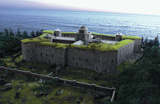
New Deal created over 120 shots featuring miniatures, additional photography and digital effects for ‘Shutter Island’. VFX Supervisor Matthew Gratzner and his team built a 14ft model lighthouse for the film’s mysteriously beautiful final shot captured at sunset, the sinister Ashecliffe Hospital asylum housed inside a Civil War fortress and the interior stairwell. From Digital Media World Magazine
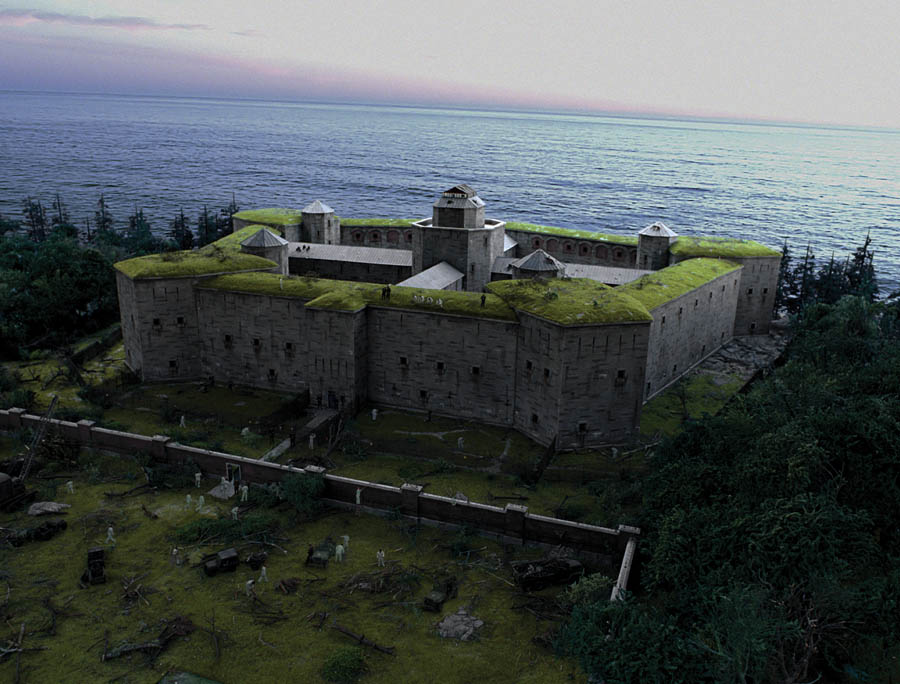 |
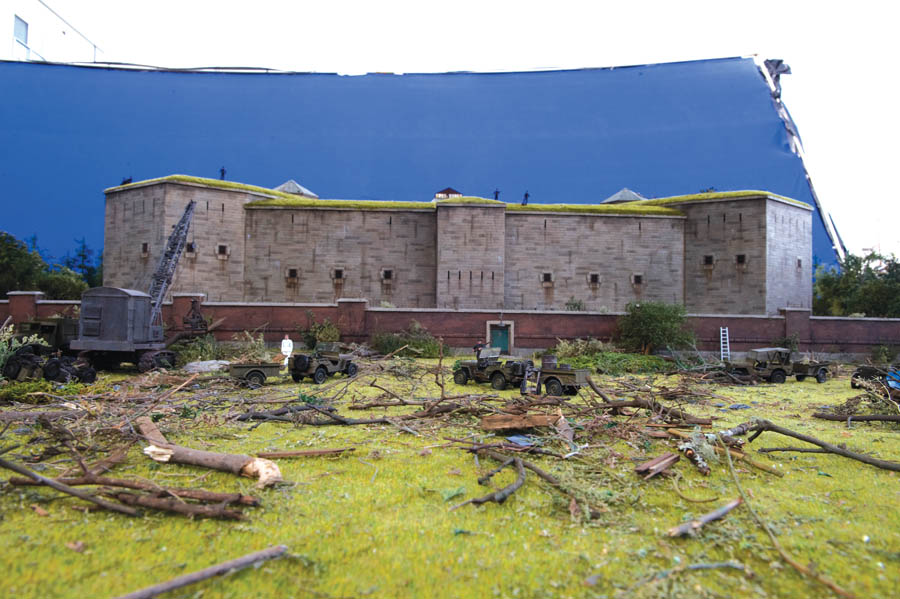   |
|
Matthew is understandably proud of his company’s ability to produce miniatures. It is a skill that fewer artists have nowadays, although their work remains highly sought after. New Deal’s miniatures have appeared most recently in features including ‘Alice in Wonderland’, 2012, ‘The Dark Knight’, ‘Aviator’, ‘National Treasure’, ‘X-men 3’, ‘Spiderman 3’ and many others. Two Scales “New Deal is one of the few studios able to handle all kinds of effects, from practical to digital, in house,” Matthew said. “This means we can complete all effects needed in a shot from concept to a fully colour correted piece. It also means that we can choose the tools that best suit the shot and deliver the story. For this show, miniatures happened to work well on a number of shots.” Mathew believes that artists may be cheating themselves by not having access to a complete range of FX tools. “Some things really can’t be done practically or with miniatures but ‘Shutter Island’ didn’t have a lot of complicated camera moves, although there was a fair amount of hand held work we had to track to get all elements composited correctly. Swept Away The source for all their designs is the film’s Art Department, Production Designer Dante Ferretti and Art Director Bob Guerra. Matthew was familiar with this crew from work on other Martin Scorsese projects. New Deal’s team were supplied not only with blueprints of all designs used by the first unit crew but also with material samples from the full scale sets to use as reference for building the models. Every time shooting wrapped up on a set, the crew would save pieces of it for him – sections of brick walls, stone and other material - and ship them from the location in Boston to his studio in LA for colour and texture matching.The actual lifesize sets where the actors were filmed had to be fairly limited in scope, although complete in terms of measurement and detail, designed and built by Dante Ferretti and his crew. Real World Skills New Deal has a core group of staff, ramped up or down according to what a given project needs. “It’s getting harder to find artists who can build miniatures, not so many people still learn about practical effect design and building. But has people on board who do digital compositing, modelling, animation and matte painting, and work on miniatures as well. He values this because not only do the staff have more shills but what ever is learned practically can be transferred to digital work and improves their understanding of the way light and photography work in the real world. Model Tracking From such a track, they take a digital model of their physical miniature, incorporate it into the shot and then export the move to a motion control camera, and use this to shoot the model. If done properly, the two images will line up. “It’s not much different to tracking digital elements,” said Matthew, “except that in digital work you have the advantage of being able to force the match. The backgrounds, for example, have to line up perfectly.” He can also take the same model files, export them as object files into Maya and use them for previsualisation. When they prevised the high and wide Ward C shot, positioned at the edge of the cliff, he was confident that his lens setup would be accurate for what they needed to shoot because the model in the previs is exactly the same as the model they built. Matthew remarked that the advent of digital effects 10 to 15 years ago brought with it the closure of several model shops, but he regarded the capabilities of the software as another set of tools to make better models with. “I don’t really mind how the effects for any shot are achieved. I only want them to look good, to be produced efficiently and to tell the film’s story. Whether you are going to shoot a model or create a matte painting, it has to be done properly.” Continuity For the miniature shoot, it isn’t necessary to use the same camera as first unit but shots will need the same lens specifications, size and focal length. Otherwise they will not line up correctly. Measurements rely on collecting enough set data, but the lens tilt angle and focal length must be consistent. Typical on set data Matthew needs to record includes distances from subject to camera lenses and camera angles, lens height and tilt, all documented well enough to be able to duplicate shoot conditions for the model shoots. He also captures photos around the set with different scale objects as reference, and sometimes a gray ball or mirror ball for ambient light reference, although this is more likely to be needed for animation. High and Wide Not much previs and heavy storyboarding had been done earlier but Matthew created boards for some shots for his team that Scorsese wanted to add later, after the principle photography. The high and wide shot was also added well into production after the edit was underway, to replace a view to be shot lower down as live action with an extension still to be determined. Matthew suggested using the high, wide establishing shot of the whole model instead, and successfully prevised it for the director. Post–Hurricane Destruction |
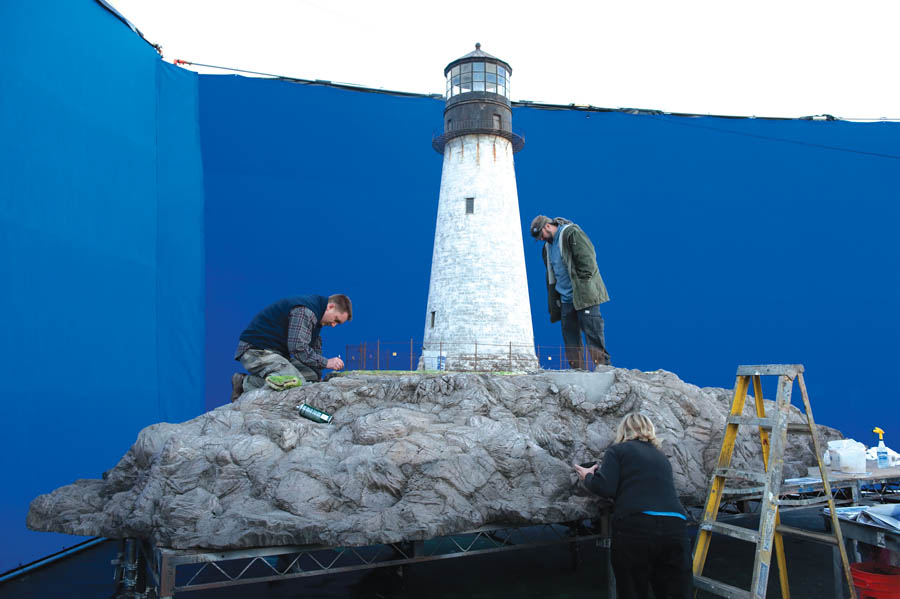 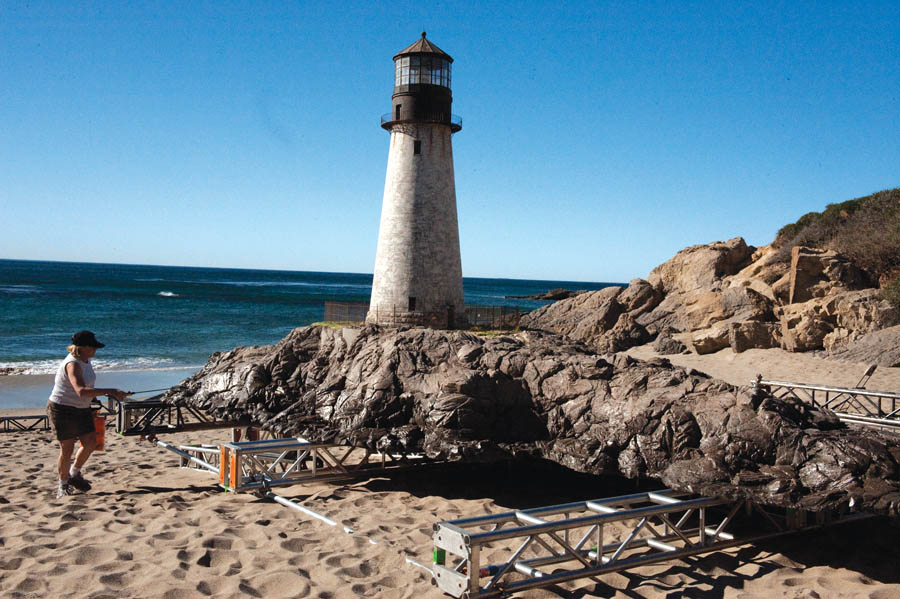 |
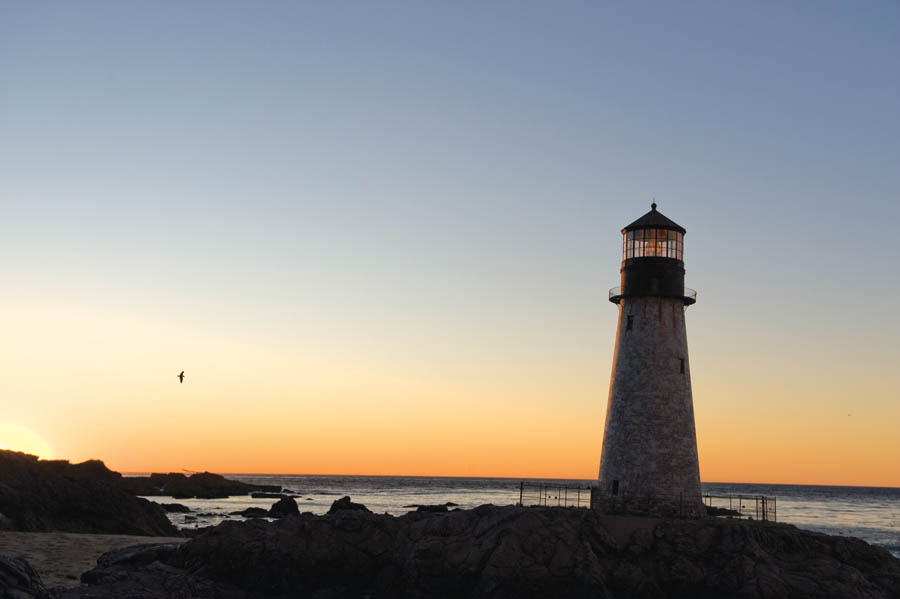 |
The final shot in ‘Shutter Island’, showing the lighthouse, was Matthew’s favourite, achieved with the 1/12 scale model at Malibu beach, shot 100 per cent in camera. Matthew called it a foreground hanging miniature. The shot was lined up in camera fixed in the nodal head position, which means that no parallax occurs during panning. The foreground and background don’t shift relative to each other and all objects are locked. Instead, the whole field moves because the pan pivot point is on the film plane. The model is close enough to camera and far enough from the background that when you look though the eyepiece, everything appears to be the same scale, with the same perspective. Because the coast didn’t line up as required when moving left to right, the image was ‘flopped’ in post. This adjustment, with the colour correction, were the only fixes made to the shot in post. Everything else was kept as it was – the sky, ocean and seagulls. A set assistant threw out bread to attract the gulls. The rock appearing in the foreground of this shot with the lighthouse was also a miniature. They shot the set up at different times of day and chose the most cinematic. They had to time it with the tide because it was located in a cove off a cliff about 20 feet down on the sand where everything was assembled on scaffolding. The model was 12’ wide at the base and 14’ tall. The shoot was completed over two days for set-up and shooting. Words: Adriene Hurst Images: courtesy of New Deal Studios |
 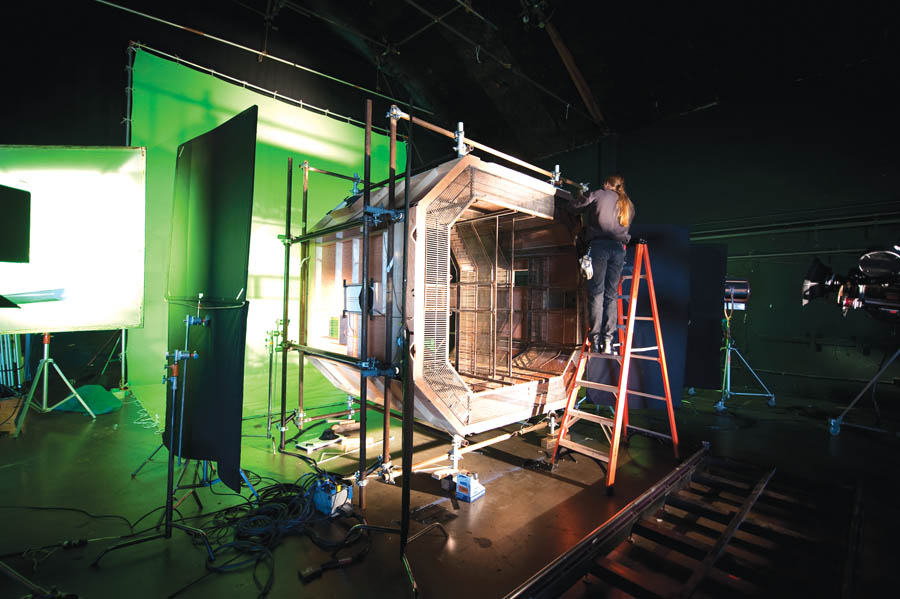 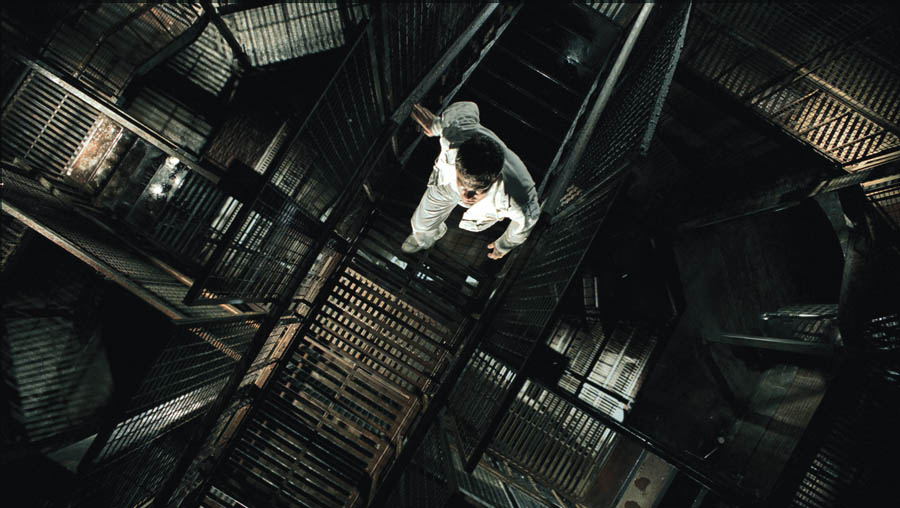 |
|
Featured in Digital Media World. Subscribe to the print edition of the magazine and receive the full story with all the images delivered to you.Only$77 per year. |


















